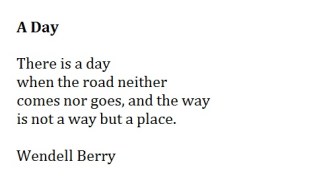
Rabbi Vanessa M. Harper is the author of Loaves of Torah: Exploring the Jewish Year through Challah, recently published by CCAR Press. In this interview, she explains the importance of challah in Jewish tradition, her creative process, and why it’s important to embrace alternative ways of engaging in Torah study.
What is the significance of challah in Judaism?
Challah is no ordinary bread. It is rich with religious and spiritual resonance, as well as powerful sensory memories that are often connected to community and culture, making it one of the few loci on which the increasing number of Jews who identify as cultural or non-religious—as well as religious and/or spiritually-oriented Jews of all denominations—are able to come together with equal levels of enjoyment, access, and license to innovate.
Religiously, challah connects back to the biblical practice of tithing (still in effect today for those who perform hafrashat challah with their dough; see Numbers 15:17–21) and to the sacrificial altar (many challah shapes are inspired by the twelve lechem panim described in Leviticus 24:5–9). On a spiritual level, making and shaping challah dough also offers a microcosmic connection to Creation. Culturally, challah has taken on many different flavors and shapes over the centuries, but it has always been a beloved feature of the Shabbat and holiday table. It’s a beautiful and delicious form of identification, as well as physical and spiritual nourishment!
Why did you choose challah as your artistic medium?
It might be more accurate to say that challah chose me. This project started as an experiment, and it turned out that challah dough happened to be a medium that ignited my creativity. One thing I love about working with dough is that it is a medium with boundaries—it’s not as versatile as clay, for instance, and you have to learn how to work with it—and that it is alive, and thus has some input into the final product, based on how it rises, etc. In that way, it’s very much like studying with a chavruta (study partner).
When planning one of your challot, how do you choose the symbol or image you want to bring to life?
I always start by reading the parashah, or studying texts on the holiday or month for which I’m shaping. I try to go in with my mind open to any words, images, or concepts that stand out to me, and I take a very broad idea to the kitchen counter. The interpretation usually starts to take shape as I’m actually working with the dough. I don’t always know exactly how it’s going to turn out, and sometimes the best shapes emerge when I go into shaping without any ideas in mind at all.
Why is it important to incorporate creative techniques when studying Torah?
Studies show that when we are actively using our hands, we activate different pathways in our brain, and we make connections we may not have otherwise made. I know that I certainly think differently and see through different lenses when I’m shaping dough than I do when writing a sermon or preparing a traditional text study, and so for me one of the great personal benefits of this practice is that it expands my understanding of Torah. For many people who do not process or express themselves best in traditional formats like reading, writing, and speaking, incorporating creative approaches to Torah study opens up an ability to approach the text at all, or to express a novel interpretation of its wisdom—one which might not have surfaced if the opportunity to work in another kind of expressive language wasn’t made available.
What are some lessons you hope readers take away from Loaves of Torah?
A person’s Torah is only revealed when we create space for the language which their soul speaks to flourish, and my deepest hope is that Loaves of Torah creates some of that space for new Torah to be revealed by inviting more languages and more voices into our Jewish learning and living spaces. This book is, at its heart, an invitation to engage with Torah in a way that is playful and personal, modern and multifaceted, and through that engagement, I hope you’ll find a lens that helps you make Torah your own.
Rabbi Vanessa M. Harper is Senior Director of Adult Jewish Living at Temple Beth Elohim in Wellesley, Massachusetts, and Reform Rabbi in Residence at Gann Academy. She is the author of Loaves of Torah: Exploring the Jewish Year through Challah (CCAR Press, 2023).















